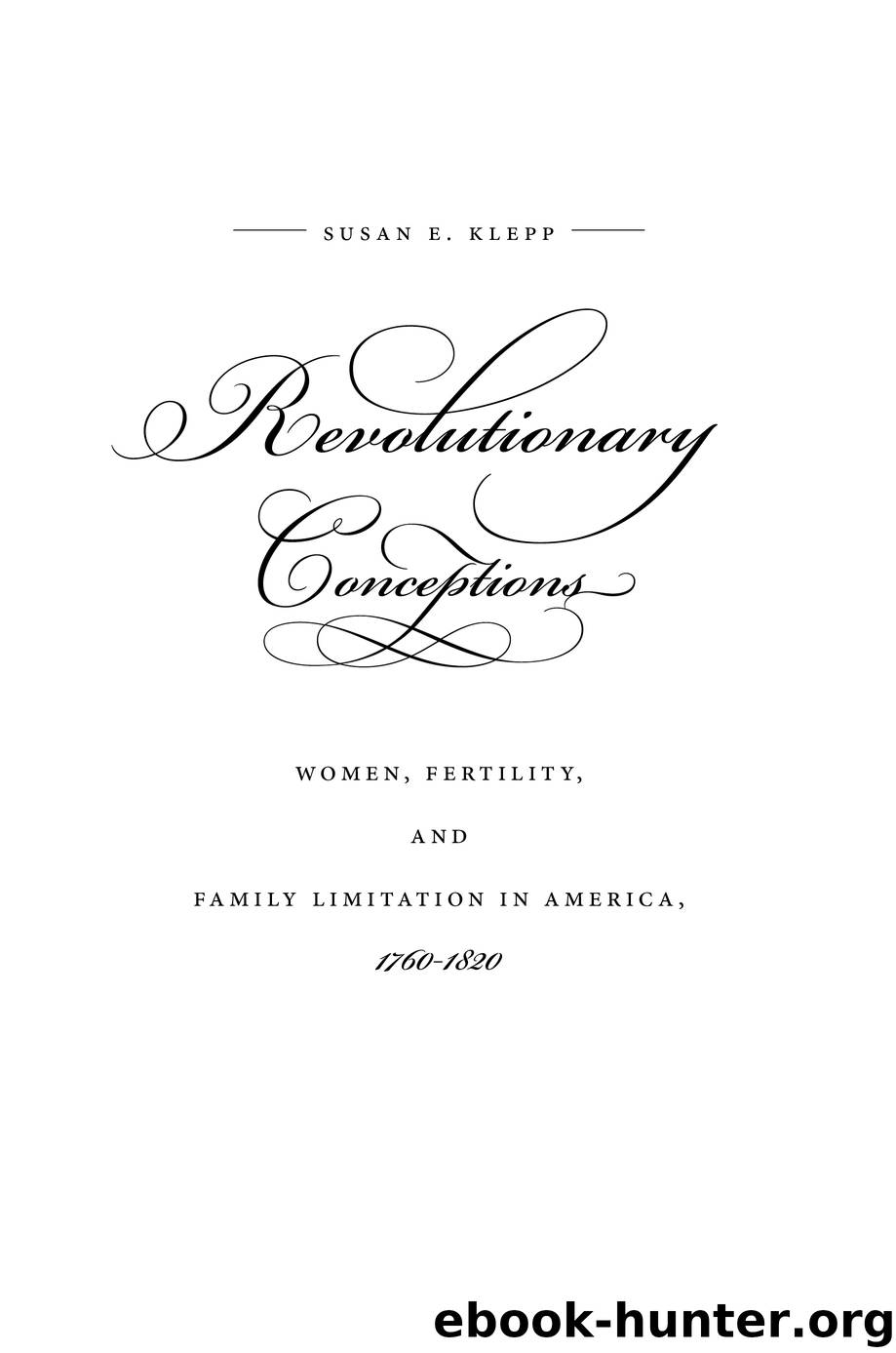Revolutionary Conceptions by Susan E. Klepp

Author:Susan E. Klepp
Language: eng
Format: epub
Publisher: Omohundro Institute and University of North Carolina Press
PLATE 13
Portrait of Mrs. John Stevens (Judith Sargent, later Mrs. John Murray).By John Singleton Copley, 1770-1772. Oil on canvas, 50 x 40 in. Daniel J. Terra Art Acquisition Endowment Fund, 2000.6. Permission, Terra Foundation for American Art, Chicago / Art Resource, New York.Judith Sargent Murray strikes a more assertive pose than was usual in women’s portraits.
Also from Peale is the portrait of Mrs. John Dickinson and her daughter, Sally, painted in 1772 (not included here). The production of this particular portrait had been delayed until after Dickinson had given birth. It is the child who holds a rounded lapful of lilacs, not the adult. The heads of mother and child dominate the picture. The mother stands, leaning slightly toward the child, and her right arm hides her abdomen. She steadies her daughter with both hands. Both figures are placed next to a sun-dappled staircase, and the steps lead upward. The concerned mother will guide her daughter into a promising future. Tranquillity and progress are implied. In Peale’s female portraits of this period, women embody kindness and the beauty that comes from virtue. This was a form of authority; a bride could have “a refining effect on her new husband as well as on all that transpired in her new home.” Women had a sphere of their own, a domestic realm.24
American artists avoided quoting luxury-loving British aristocrats in the last third of the eighteenth century and instead borrowed Renaissance images of the Madonna and child for their portrayals of republican women. Women in these paintings are virginal, pure, self-controlled. A fully developed example is the portrait of Elizabeth Wurtz Elder and her children, painted by Jacob Eichholtz in 1825 (Plate 14). Elder’s white dress and that of her infant connote purity. The grapes do not spill from her body—she does not even touch them—but are clutched tightly by her older daughter while the younger daughter, just a toddler, lunges greedily after them. Unrestrained passions are infantile. The mother and son are restrained, upright. Virtuous women are above lowly appetites, and, like the Renaissance presentations of the Virgin Mary and infant Jesus, they have lost the obvious sexuality of colonial portrayals. Adult women are rational. Only young children and servile people have too little self-command and reason to resist impulsive behaviors. Children, especially, need careful training and supervision if they are to be virtuous citizens, and this is the important role of women.
Download
This site does not store any files on its server. We only index and link to content provided by other sites. Please contact the content providers to delete copyright contents if any and email us, we'll remove relevant links or contents immediately.
Men In Love by Nancy Friday(5192)
Everything Happens for a Reason by Kate Bowler(4700)
The Immortal Life of Henrietta Lacks by Rebecca Skloot(4548)
Why We Sleep by Matthew Walker(4394)
The Sports Rules Book by Human Kinetics(4341)
Not a Diet Book by James Smith(3373)
The Emperor of All Maladies: A Biography of Cancer by Siddhartha Mukherjee(3111)
Sapiens and Homo Deus by Yuval Noah Harari(3028)
Day by Elie Wiesel(2745)
Angels in America by Tony Kushner(2623)
A Burst of Light by Audre Lorde(2568)
Endless Forms Most Beautiful by Sean B. Carroll(2442)
Hashimoto's Protocol by Izabella Wentz PharmD(2349)
Dirty Genes by Ben Lynch(2292)
Reservoir 13 by Jon McGregor(2264)
Wonder by R J Palacio(2182)
And the Band Played On by Randy Shilts(2163)
The Immune System Recovery Plan by Susan Blum(2040)
Stretching to Stay Young by Jessica Matthews(2011)
